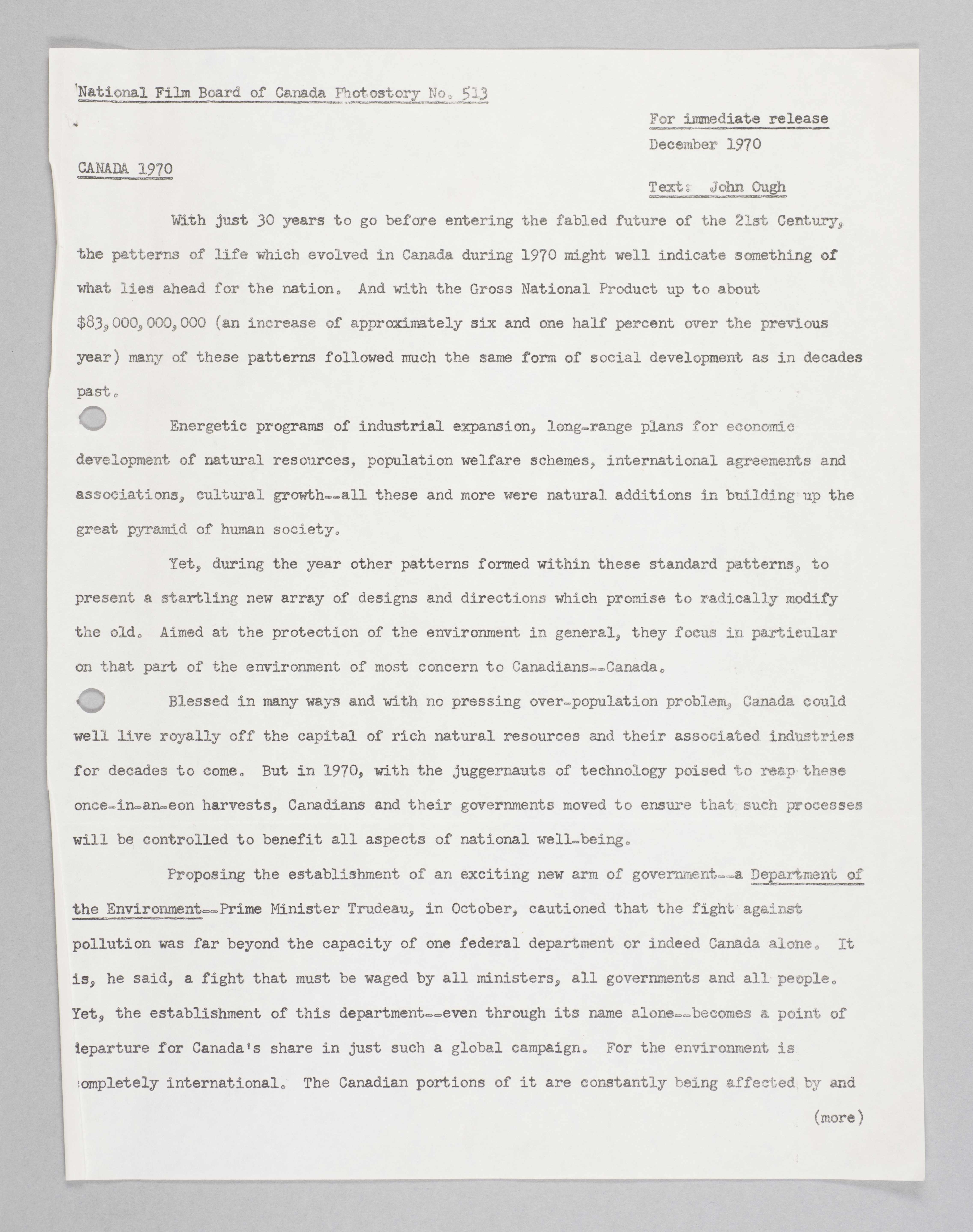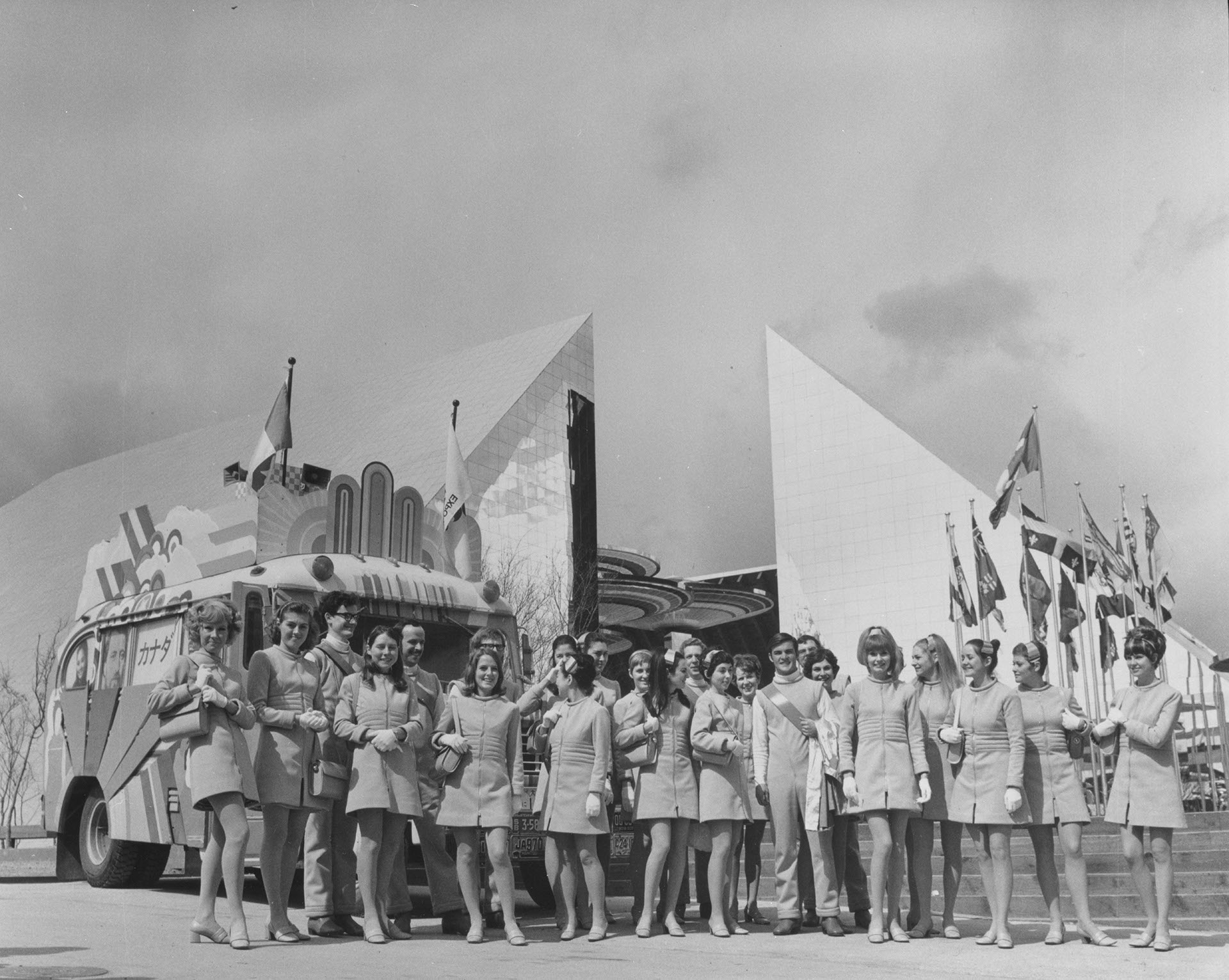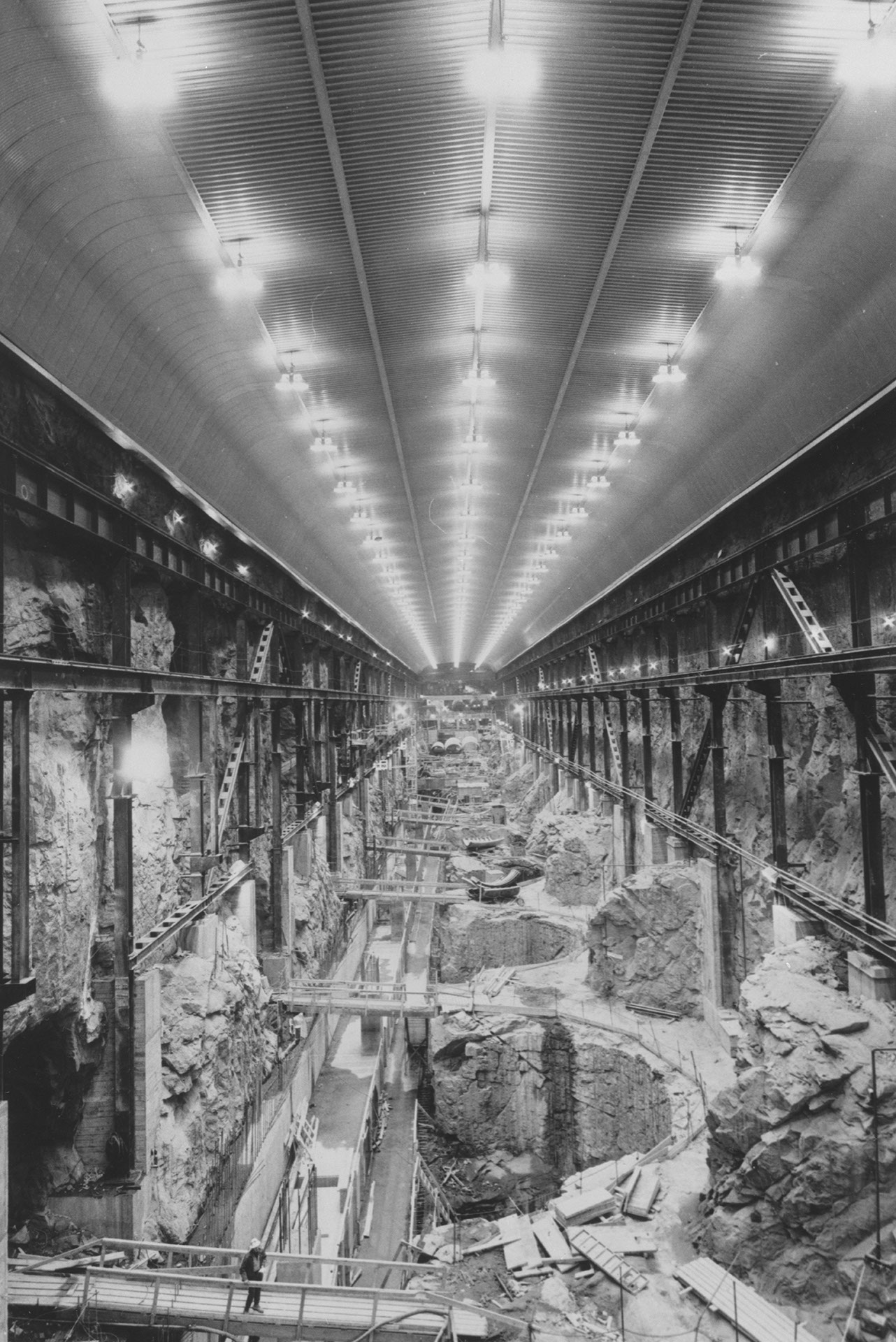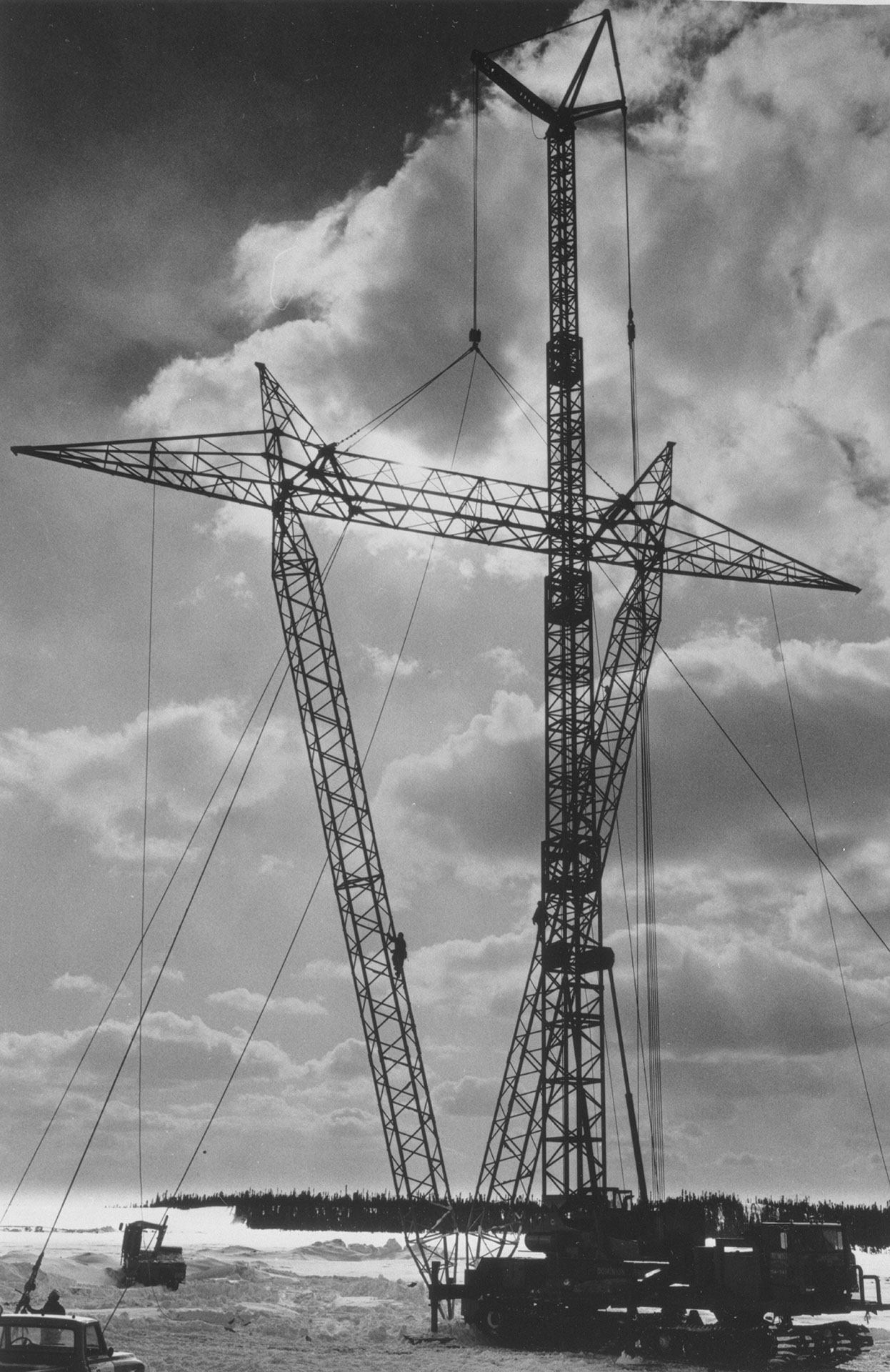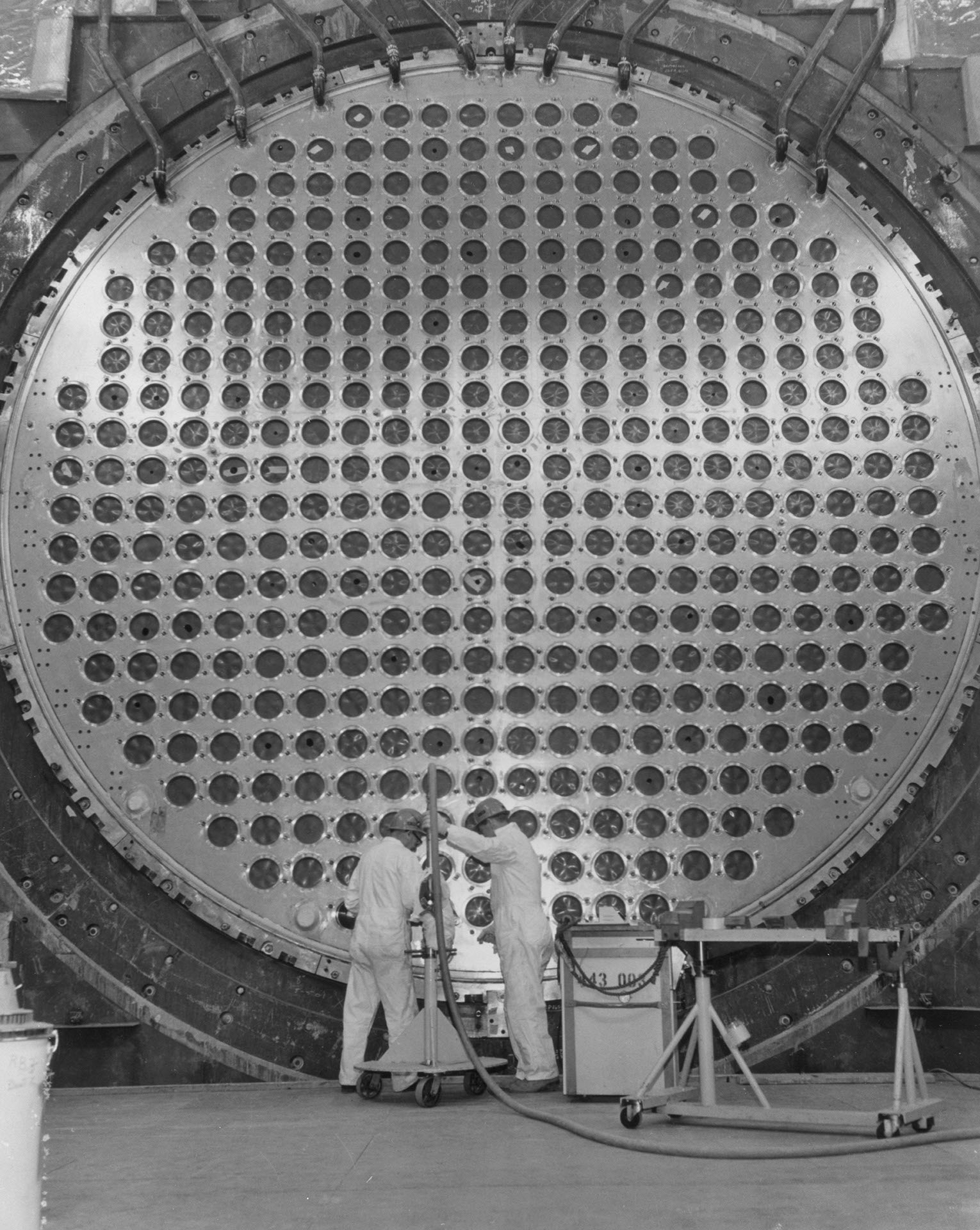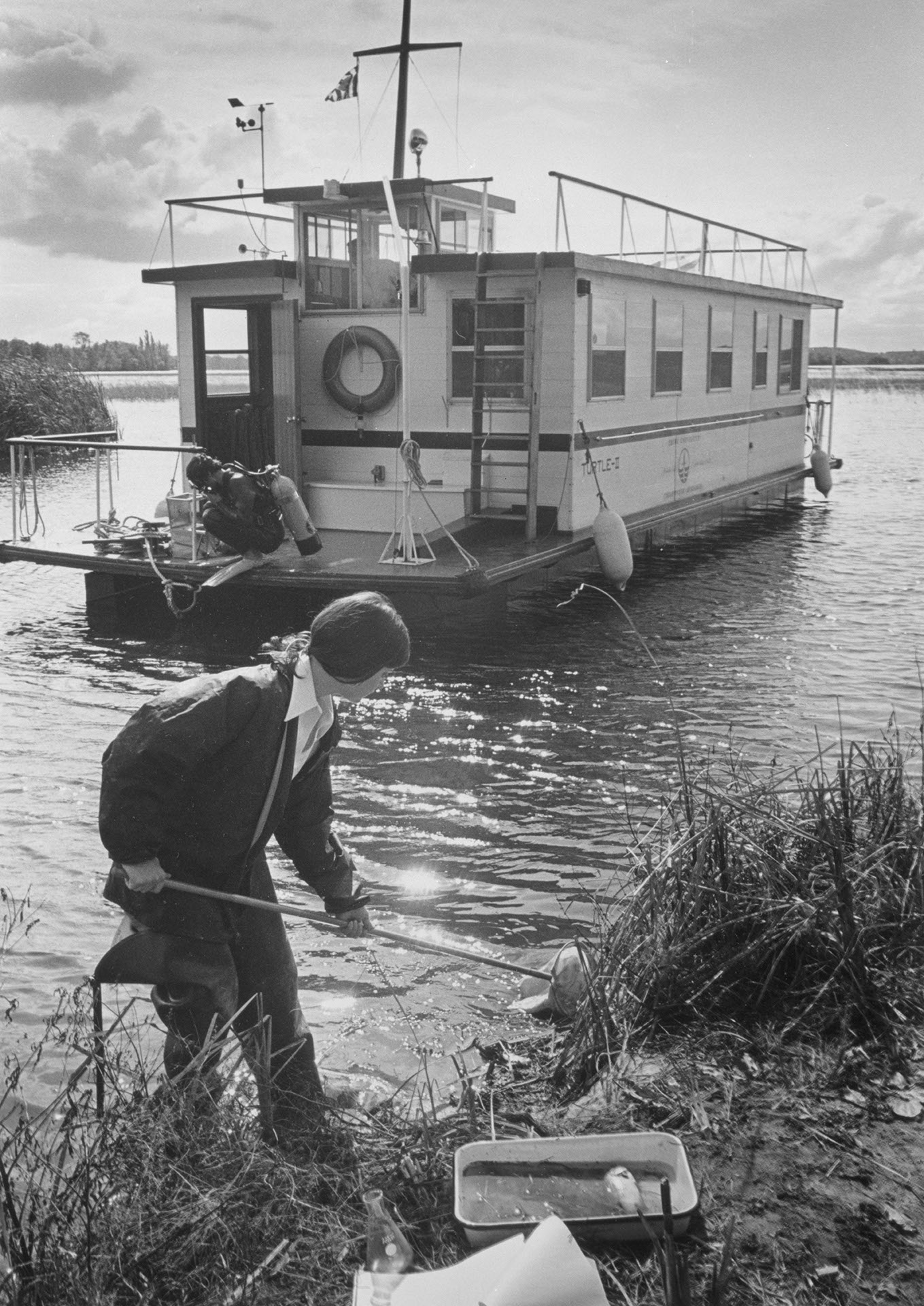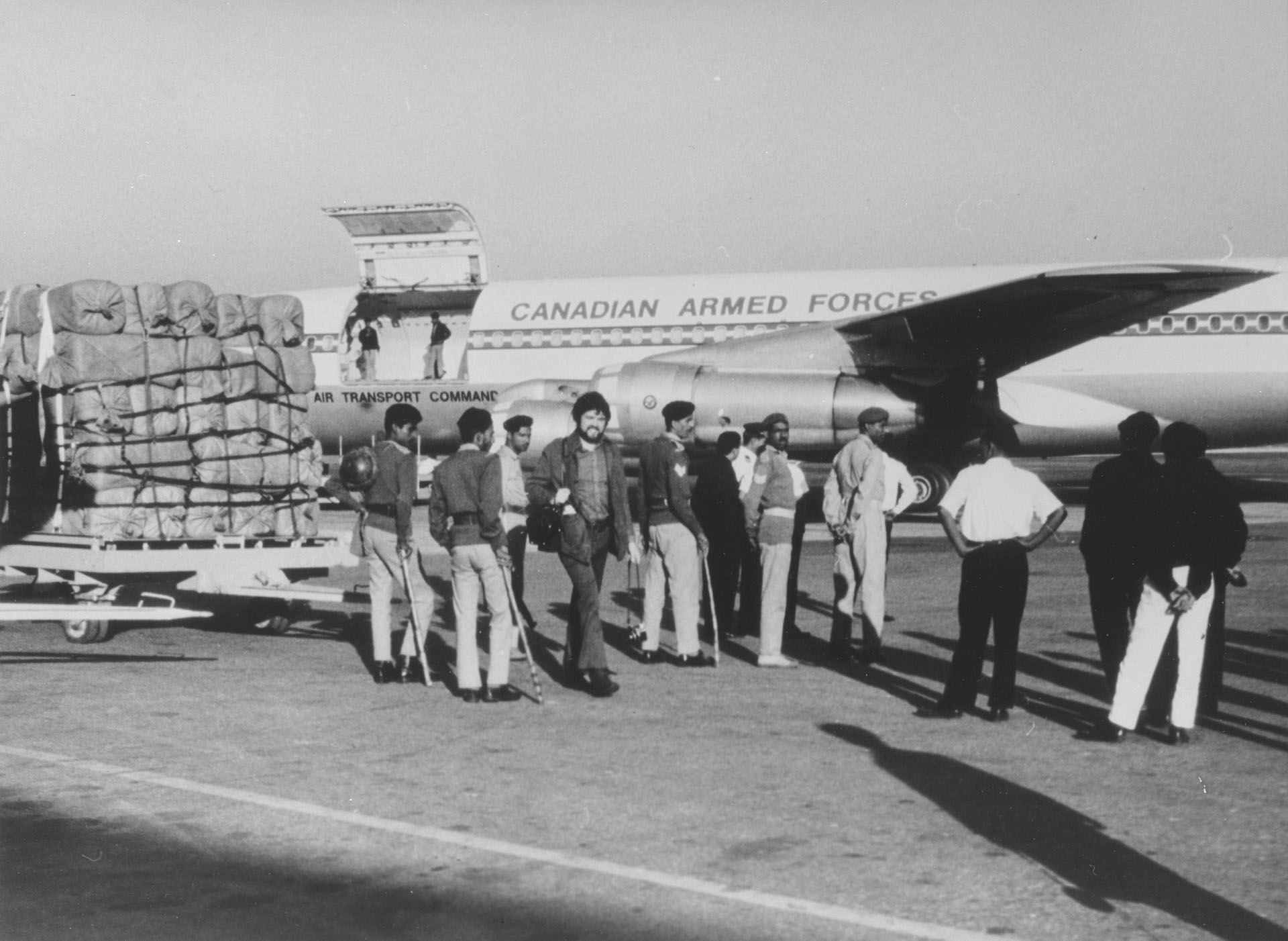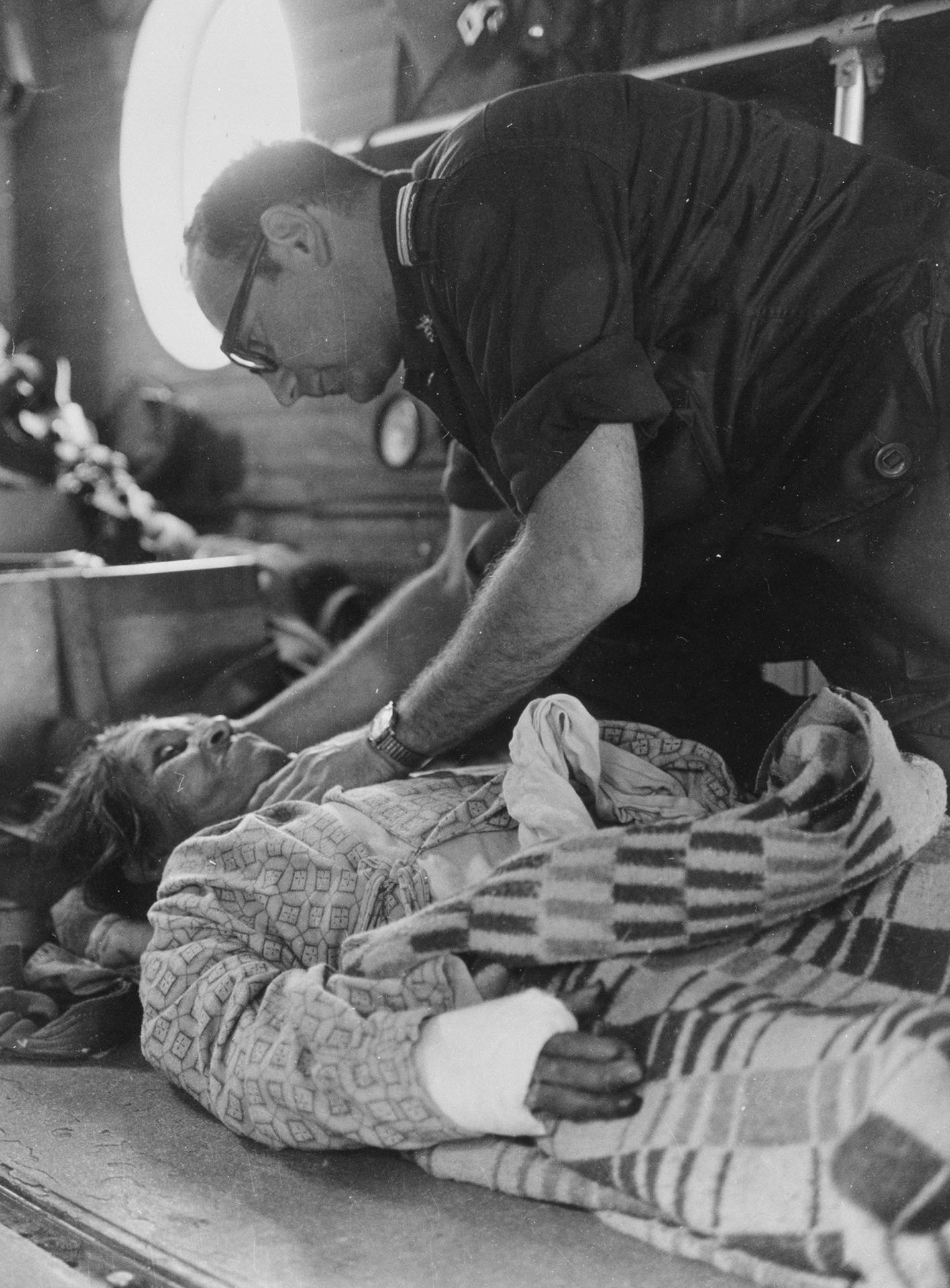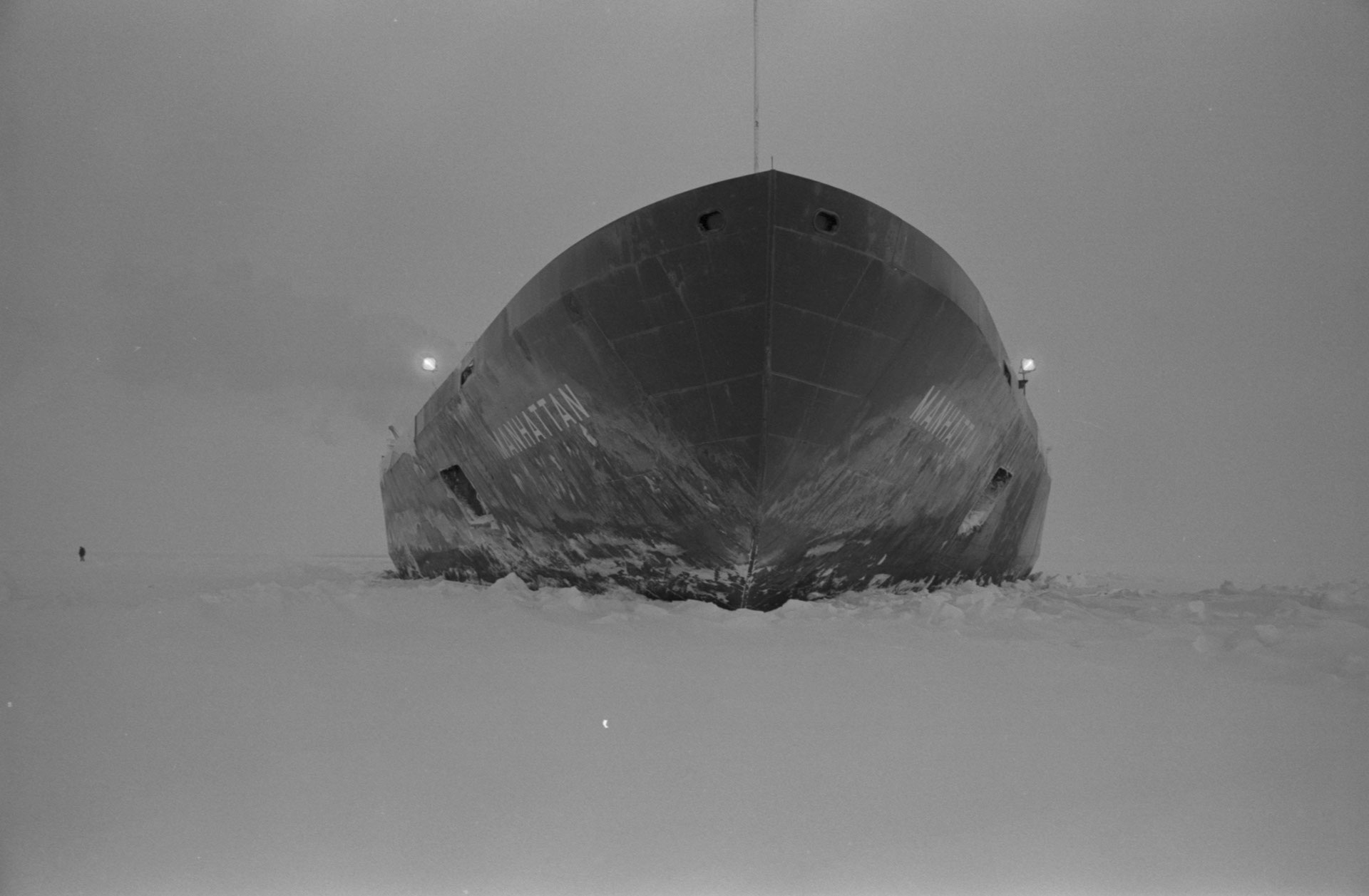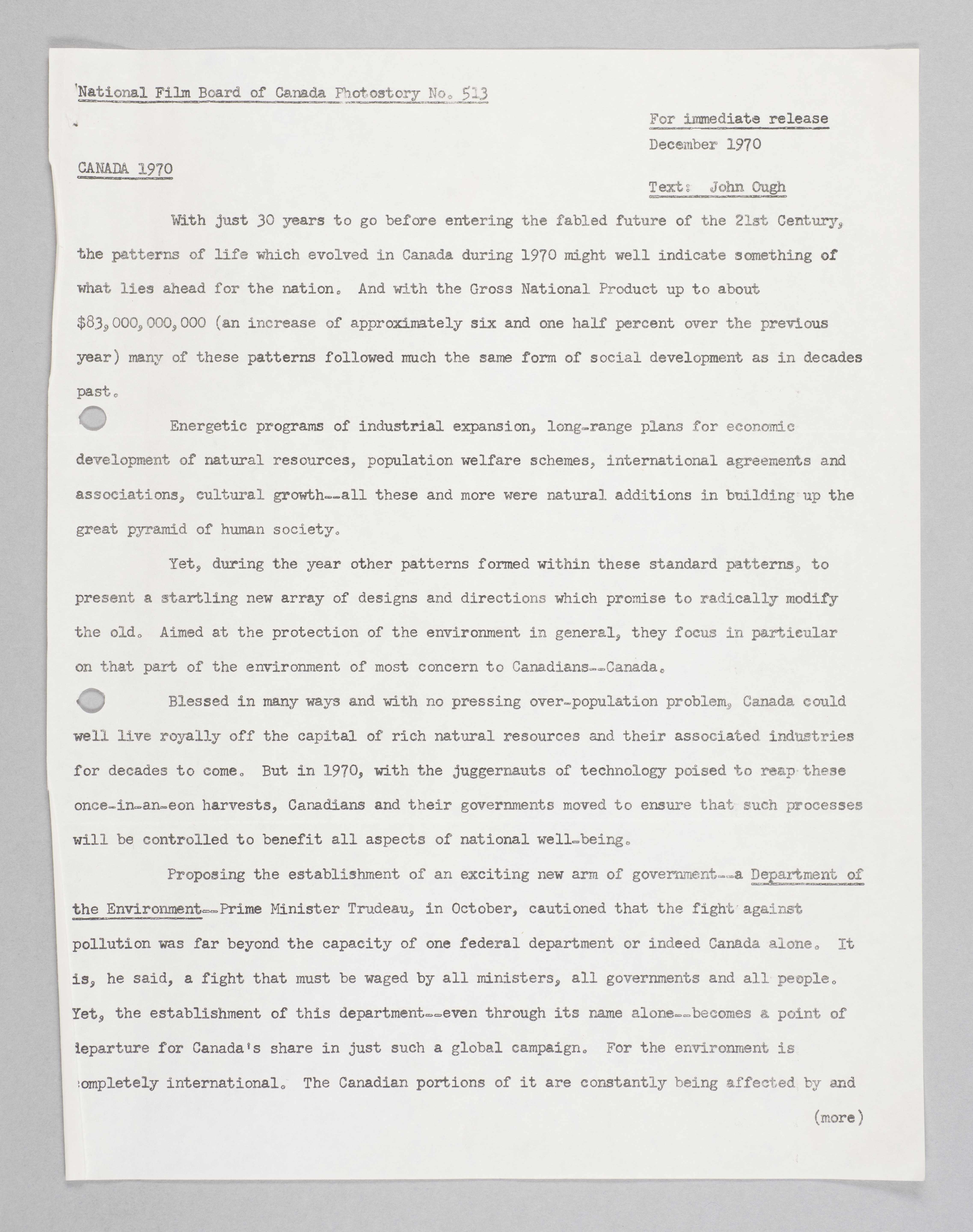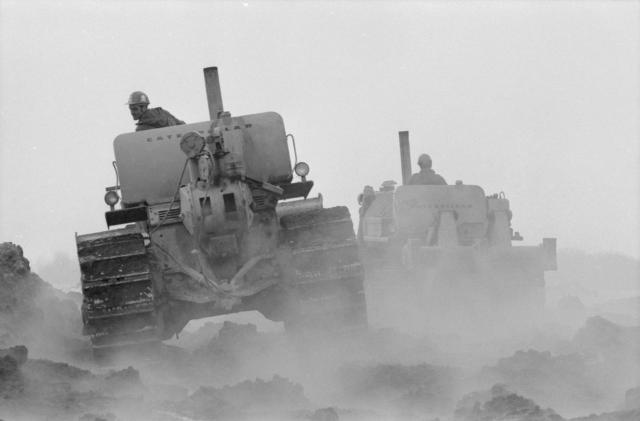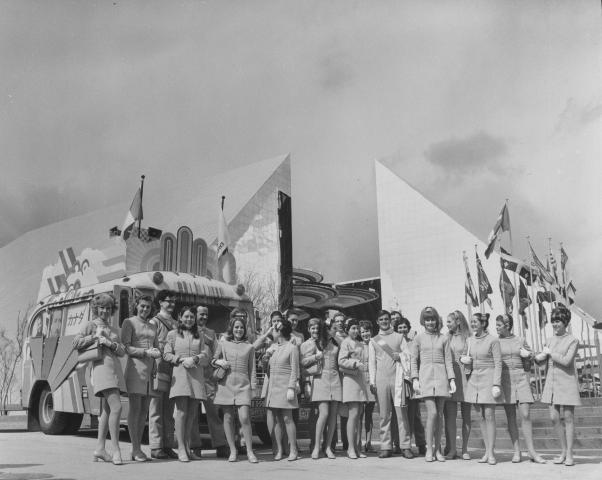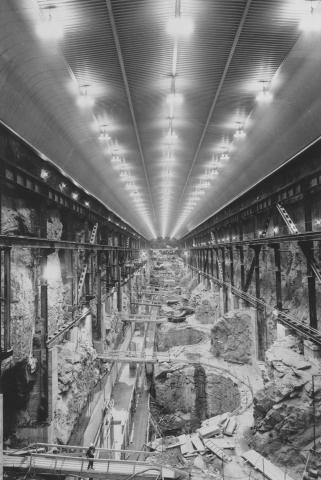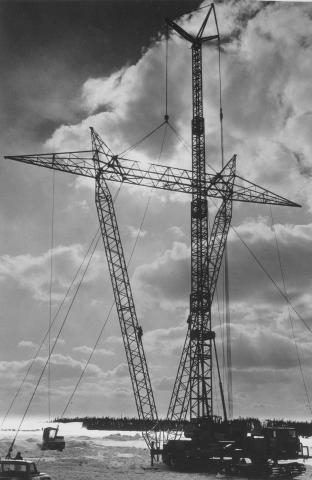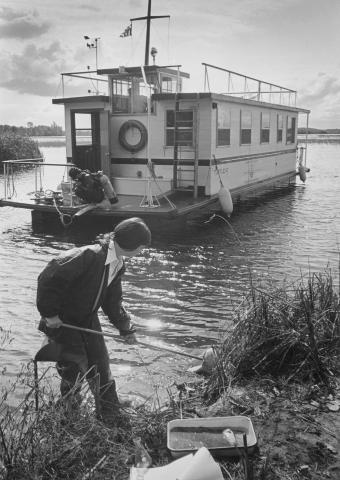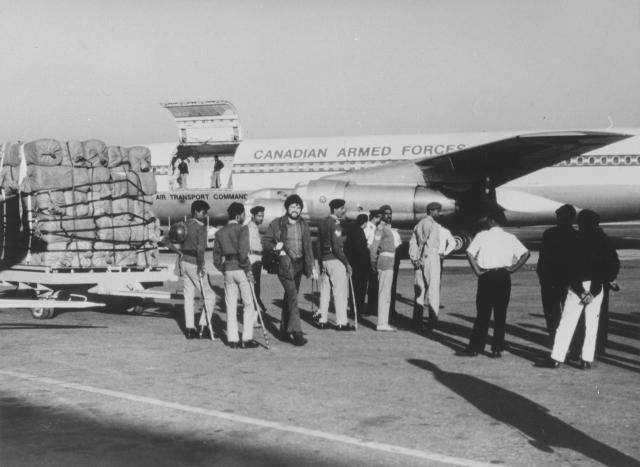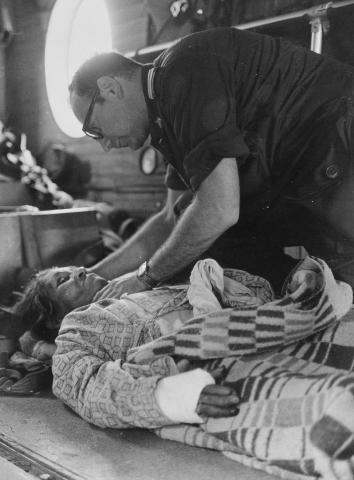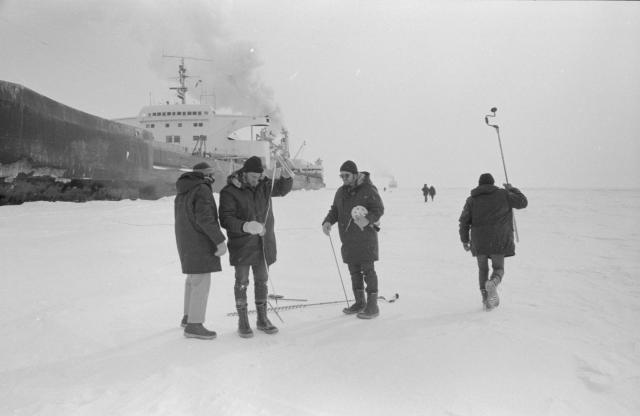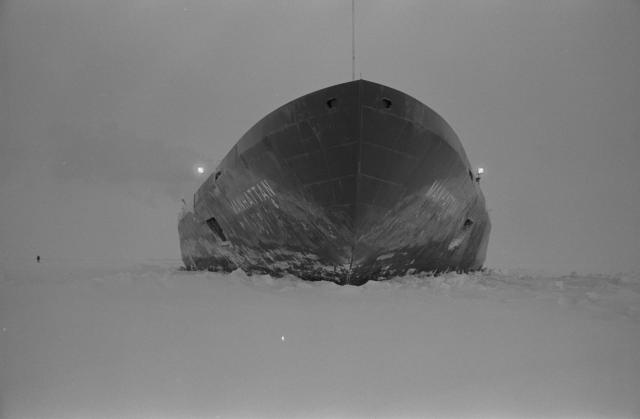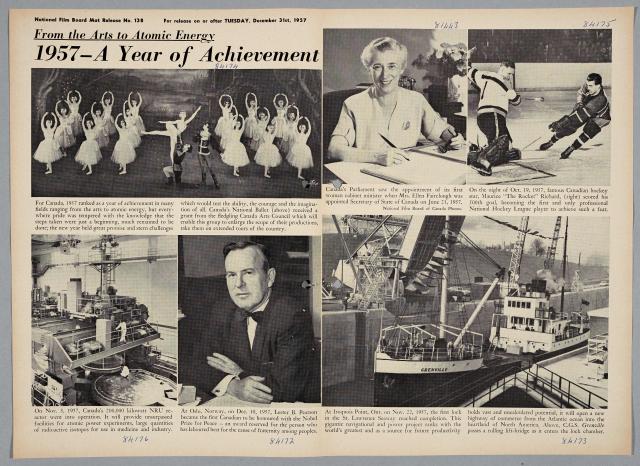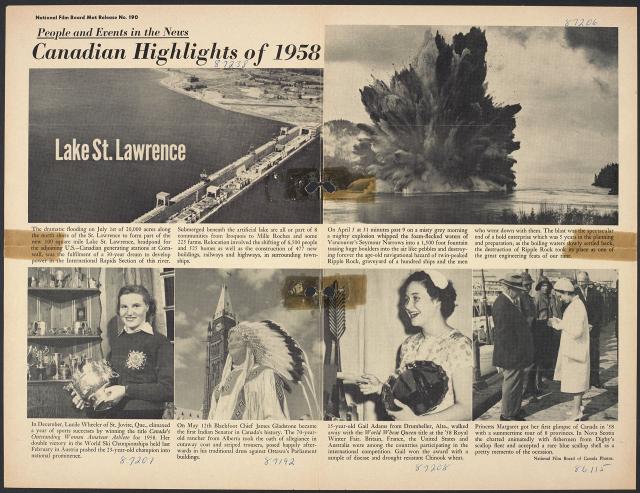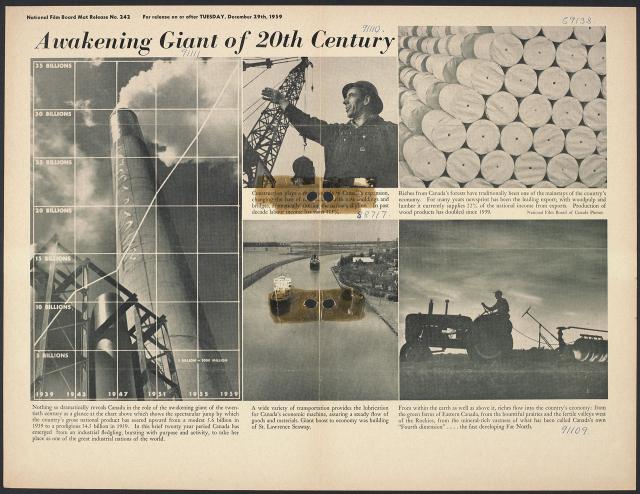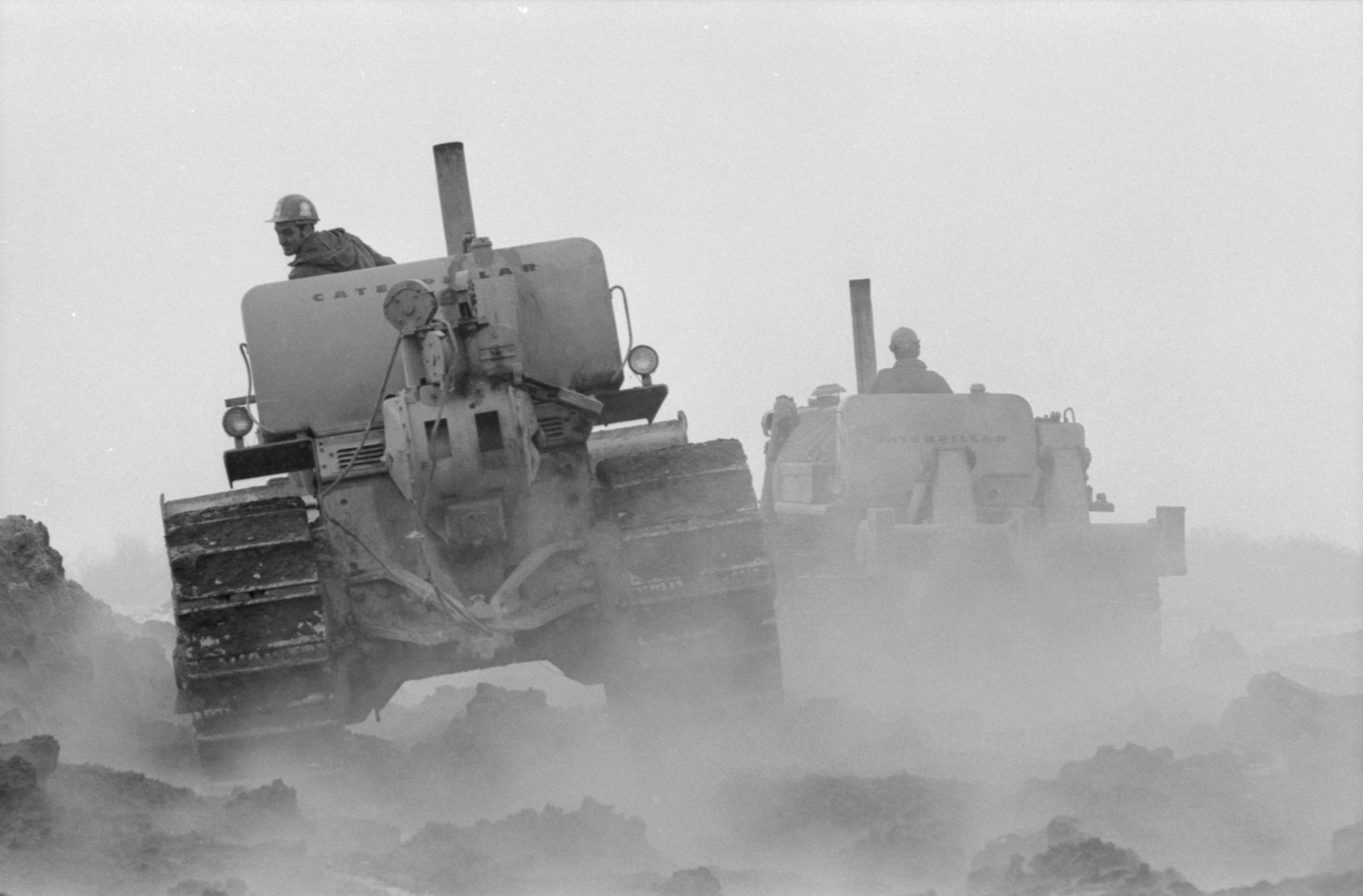
Photostory #513: Canada 1970
Photographers
Maker
National Film Board of Canada
Release Date
December 1, 1970
Collection
CMCP fonds
Credit Line
Canadian Museum of Contemporary Photography fonds, National Gallery of Canada Library and Archive
Main Text
In progress Photostory 1/7 : With just 30 years to go before entering the fabled future of the 21st Century, the patterns of life which evolved in Canada during 1970 might well indicate something of what lies ahead for the nation. And with the Gross National Product up to about $83,000,000,000 (an increase of approximately six and one half percent over the previous year) many of these patterns followed much the same form of social development as in decades past. _x000B__x000B_Energetic programs of industrial expansion, long-range plans for economic development of natural resources, population welfare schemes, international agreements and associations, cultural growth - all these and more were natural additions in building up the great pyramid of human society. _x000B__x000B_Yet, during the year other patterns formed within these standard patterns, to present a startling new array of designs and directions which promise to radically modify the old. Aimed at the protection of the environment in general, they focus in particular on that part of the environment of most concern to Canadians - Canada. _x000B__x000B_Blessed in many ways and with no pressing over-population problem, Canada could well live royally off the capital of rich natural resources and their associated industries for decades to come. But in 1970, with the juggernauts of technology poised to reap these once-in-an-eon harvests, Canadians and their government moved to ensure that such processes will be controlled to benefit all aspects of national well-being. _x000B__x000B_Proposing the establishment of an exciting new arm of government - a Department of the Environment - Prime Minister Trudeau, in October, cautioned that the fight against pollution was far beyond the capacity of one federal department or indeed Canada alone. It is, he said, a fight that must be waged by all ministers, all governments and all people. Yet, the establishment of this department - even through its name alone - becomes a point of departure for Canada's share in just such a global campaign. For the environment is completely international. The Canadian portions of it are constantly being affected by and mixed with those of other countries, the whole a physically-delicate swirling mass of life-supporting chemicals which is absolutely unresponsive to national pride, ambition, affluence or poverty. _x000B__x000B_In 1970, younger Canadians (including the surprisingly vividly-aware grade school children) realized that the environment had become so susceptible to abuse by man as to seriously threaten his position at the apex of earthly life. For some of them an opportunity to take a part in the battle came when in 1970, Trent University in Ontario initiated a course on pollution. Based on the work of its biology department which has five years experience in studying local waterways the new course will concern air, land and water but, being equipped with a floating laboratory, particularly with the latter. Another floating laboratory, the Manhattan, was again in the news during the year. A giant experimental oil tanker, perhaps the forerunner of a massive fleet when the big oil discoveries in the arctic are made, the vessel has become the symbol - and perhaps a link between - the major conflicting interests of the seventies. Testing hull and engines against the unpredictable power of the arctic sea ice, the Manhattan's sponsors seek to establish what might be called an acceptable chance of disaster to bring south the billion-year-old fossilized fuels demanded by modern society. Already, the vessel's ambitions advances into and retreats from the fragile grandeur of the arctic coastlines have spurred Canada into asserting an overall responsibility for more arctic waters and proposed tighter rules and regulations for the safety of both men and the territory he traverses. _x000B__x000B_The year 1970 was also marked with international agreements and the increased conservation of fishing areas on both west and east coasts. Some of these new Canadian fishing zones extend beyond the 12 mile territorial limit established during the year. Object of the new actions is to bring more important fishing areas under anti-pollution laws. Another major stride during 1970 in the march against future pollution was bringing the Pickering nuclear generating station into the initial stages of operation. "Going critical" as the technology terms it, means that first power from this 2,160,000 kilowatt complex will soon be added to the resources of Ontario Hydro. _x000B__x000B_Meanwhile in central Labrador the Churchill Falls hydroelectric project, one of today's seven wonders of the engineering world, moved inexorably towards its initial power date of 1972 and a 126 mile transmission line - a marvel of human endeavor in itself - was installed across the wilderness to link up with Hydro Quebec. _x000B__x000B_In Quebec, 30 miles northwest of Montreal, the beginnings of a new international airport started with site clearing, surveying and installation of services. Designed to bear brunt of the ever-increasing travel load in the world of the jumbo jet and super-sonic-transport this new facility will dwarf existing airports. _x000B__x000B_An instance of the wide range of Canadian products which went to make up Canada's estimated $16,500,000 worth of exports during 1970 (up more than 10% from the previous year) was the building in Calgary of a 56-foot-high, four-storey office and laboratory for erection at the south pole. Including a bar lounge and automatic elevator this building will be linked with existing portable housing units also made by ATC Industries Limited. _x000B__x000B_At Expo 70 in Japan, the Canadian Pavilion was visited by 25 million people, earned special awards and popular general acclaim, was the only foreign pavilion to be visited by Emperor Hirohito on inauguration day and yet managed to underspend its original budget. _x000B__x000B_A more somber cementing of international relations occurred during the aftermath of the Peruvian earthquake disaster. Canadian Forces aircraft of 424 Squadron flew in supplies, rescued victims and later received special medals from the Government of Peru. Later in the year other Canadian aircraft were busy flying tons of medicines, tents, bandages and blankets to another terrible scene of devastation after East Pakistan suffered its worst cyclone in history. _x000B__x000B_Meanwhile, at home, where the complex fight against inflation was having strengthening effects upon the national economy and a few political extremists sent shudders across the country with their inept violence, the mainstream of Canadian life remained the enviable and cherished institution it is for the great mass of the nation's 22,000,000 population.
Subjects:
Locations:

